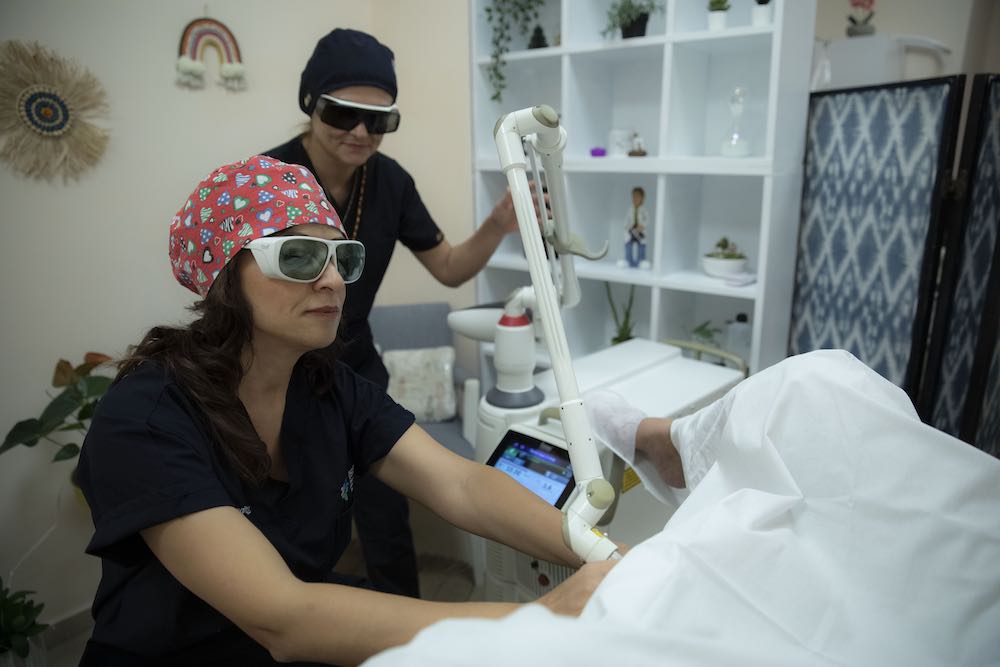Laser urinary incontinence treatment is applied with Fotona Smooth Laser working with Er:YAG technology in our clinic.
Stress urinary incontinence (shortly referred to as SUI) is a type of urinary incontinence that occurs when intra-abdominal pressure increases in conditions such as coughing, sneezing, laughing, jumping. SUI is thought to occur as a result of weakening of the bladder’s supporting structures by stretching during birth, aging, or other conditions. It is caused by injury to the pelvic floor muscles or the fascia tissue, which is made up of collagen under the bladder and urethra.
Traditionally, the treatment of SUI was only possible with surgery. However, the new approach successfully used to treat SUI today is laser therapy. Laser therapy has proven to be successful in treating disorders affected by collagen damage.
Fotona Er-Yag laser is a non-ablative laser treatment that promotes collagen synthesis in the tissues around the bladder outlet. IncontiLase®, a function of Fotona Smooth Laser, is a non-invasive Er:YAG laser for the treatment of mild to moderate stress urinary incontinence based on non-ablative photothermal stimulation of collagen production, reduction and tightening of vaginal mucosa tissue,
and healing of collagen-rich endopelvic tissue.


In the Incontilase™ treatment, the laser gently heats the vaginal tissue. This stimulates collagen remodeling, which is the growth of new collagen in the anterior vaginal wall area where the urethra is located. The result of stimulating collagen is the contraction and tightening of the vaginal tissue, which then gives more support to the bladder and regains normal urinary function.
IncontiLase is a painless, non-invasive outpatient method for the treatment of mild to moderate stress urinary incontinence (SUI). The treatment is easily tolerated, effective and safe.
Urinary incontinence treatment with Fotona Smooth Laser takes between 20-30 minutes. It is generally a painless procedure and does not require anesthesia. Some patients may experience mild pain, burning or itching at the entrance to the vagina during application, but is generally well tolerated and does not exceed 24 hours. No ongoing or persistent post-treatment pain has been
reported.
You should not have a urinary tract infection during the application, be pregnant and have a disease that causes chronic cough in order to observe the effectiveness of the treatment. The process is not applied while menstruating. Beforehand, you must have a PAP smear test performed within the last year and with a normal result. Apart from this, no special pre-operative preparation or post-operative precautions are required and there is no need to use antibiotics after the procedure. There is no visible damage to the tissue, blood loss or surgical intervention.
Two or three sessions are recommended, usually once a month.
Without a recovery period, patients can continue their daily lives immediately after the application. After treatment, sexual intercourse is not recommended for one week. Although a watery discharge may be seen after the application, this is temporary.